Ohio Memory Staff Picks: Part 2
A few weeks ago, the folks at the Ohio History Connection shared some of their favorite items in Ohio Memory. I feel comfortable speaking for them, and for the State Library of Ohio staff, as well, when I say that choosing a favorite item isn’t an easy task. There are materials from organizations all over Ohio, in just about every format you can imagine—books, photographs, audio and video recordings, textiles, ancient artifacts—and I’ll speak for our team again when I say that we are blessed to be able to work with such a gorgeous tapestry of materials.
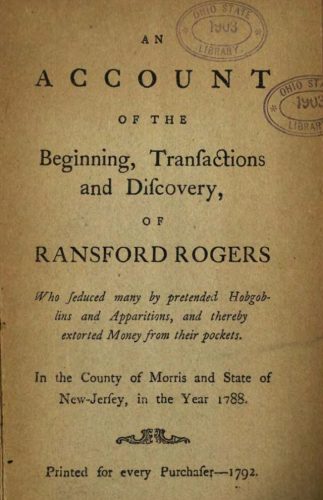
The State Library staff are excited to share some of their favorite items from that tapestry. Enjoy!
Shannon Kupfer-Trausch, Digital Initiatives Librarian
“Picture it: Morristown, New Jersey, 1788. In the nearby hills, gold was rumored to have been hidden by Tories and was guarded by spirits who were bound to keep the townsfolk from finding the riches. Enter Ransford Rogers, a huckster with an understanding of chemistry who convinced the men of the town that, for a fee, he could not only communicate with the local ghosts but also compel them to tell him where the treasure was located. To “prove” that the spirits were listening, he used his knowledge of chemistry to set off explosions that were ostensibly created by the ethereal protectors of the gold. He also threw himself into the act, wearing a sheet and appearing in the windows of the townsfolk.
It was one of these appearances, however, that led to his downfall, when he was spotted by a victim’s wife who observed that the ghost under her window wore shoes that were remarkably like those of Rogers… and wasn’t it unusual for a ghost to leave footprints? And how remarkable that the footprints led right to the home of Ransford Rogers, who was arrested and jailed. He was bailed out by one of the men he had swindled—there were fifty in all—and he then hightailed it out of town, never to be seen again.
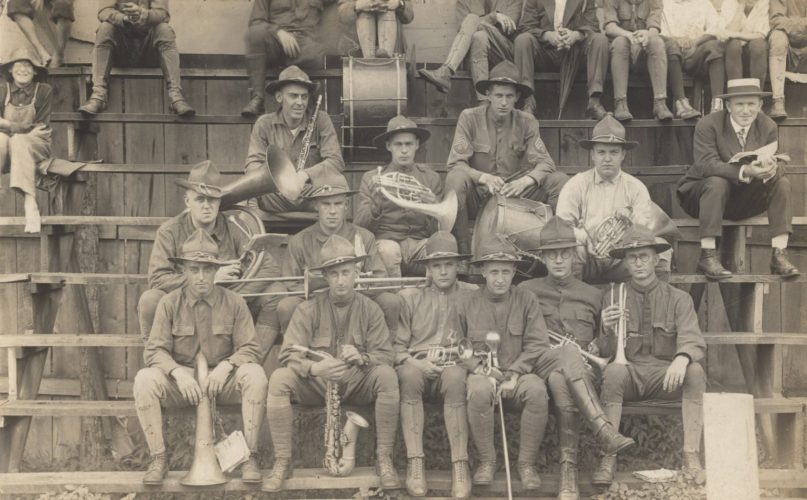
This true story can be read in An Account of the Beginning, Transactions, and Discovery of Ransford Rogers who Seduced Many by Pretended Hobgoblins and Apparitions and Thereby Extorted Money from Their Pockets. Though there are no pictures in the slim volume, the story is a hoot, and it’s a true one, at that. I laugh every time I think of Rogers, skulking under people’s windows, saying “wooooooo” with his shoes peeking out from under a white sheet!”
Elissa Lawrence, Reference/Government Documents Librarian
“As a graduate of Ohio University, some of my favorite items come from the Southeast Ohio History Center Digital Collection. It’s fascinating to see photos from uptown Athens and be able to recognize some of the old buildings when they were in their prime, or to see how much College Green has changed.
One of the items I enjoy most is from 1918 and shows the Student Army Training Corps band, which was likely the first university-established band and therefore a precursor to the current Marching 110. Another item that is astounding to me shows a house being physically relocated in the early 1900s. The thought of undertaking this feat today, even with heavy machinery, seems incomprehensible!”
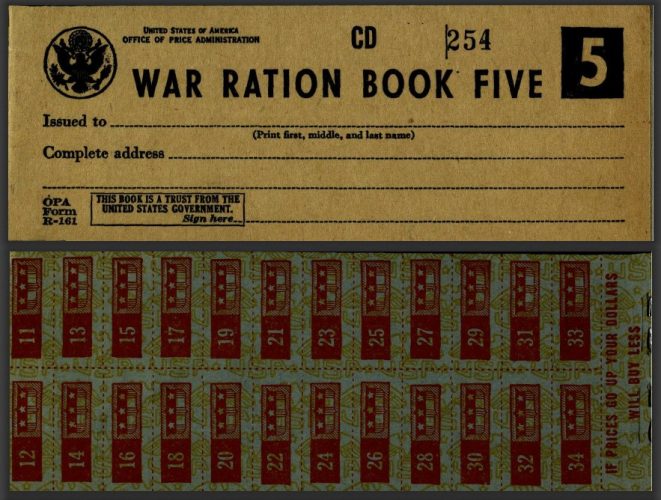
Nicole Merriman, Head, Research and Catalog Services
“2020 has been quite an interesting year but items like this World War II ration book remind me that we have been through worse. While I may have had trouble getting my hands on toilet paper and cleaning supplies this year, many more items like sugar, meat, shoes, and gasoline were rationed in World War II. This ration book is from a collection of materials that was sent to our depository library after World War II, as a reminder to the future of what we are collectively capable of and how we can collectively sacrifice to win a war.”
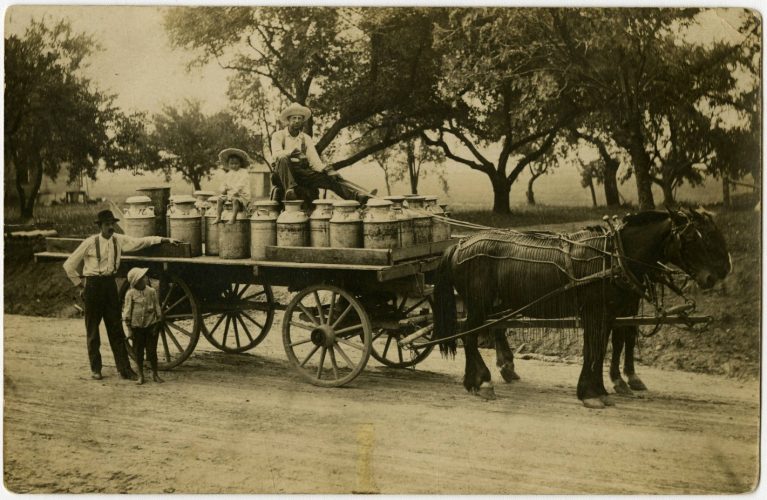
Stephanie Michaels, Reference / Cataloging Librarian
“In the early years of the twentieth century, Real Photo Postcards were the social media of their day. Portable cameras designed to print photos on paper with a pre-printed postcard back made taking and sharing photos easier and more affordable, which created an explosion of amateur photography. I love looking at photos of everyday life from this time. What were the people in this photo thinking? What were my own ancestors doing when this photo was taken?”
Ann Watson, Associate State Librarian for Library Services
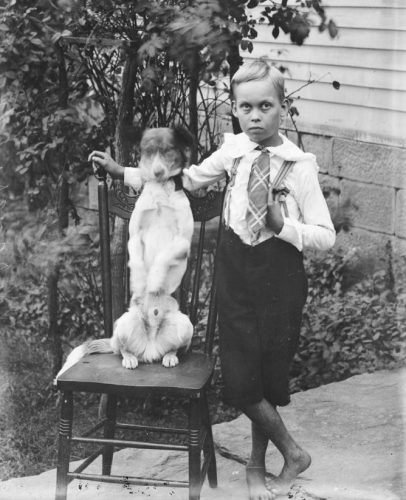
“Whenever I find myself browsing in Ohio Memory I am drawn to the Alfred J. Ewing Collection. Ewing was an itinerant photographer who traveled around Ohio and West Virginia during the early 1900s. Traveling photographers at that time were able to capture real life people and circumstances. Ewing traveled around the countryside and most likely, recruited many of his subjects. The itinerant photographer allowed a greater number of people of moderate financial means to afford a photograph of their family, or farm or to mark an important occasion.
One particular favorite is Ewing’s photo of a boy and his dog. Ewing took many photos of people and their dogs. This one stands out as the young boy is fancifully dressed and the dog is in a begging position on his hind legs while seated on a chair. The boy is barefoot which makes this photo more endearing to me. Both boy and dog appear to be very proud!
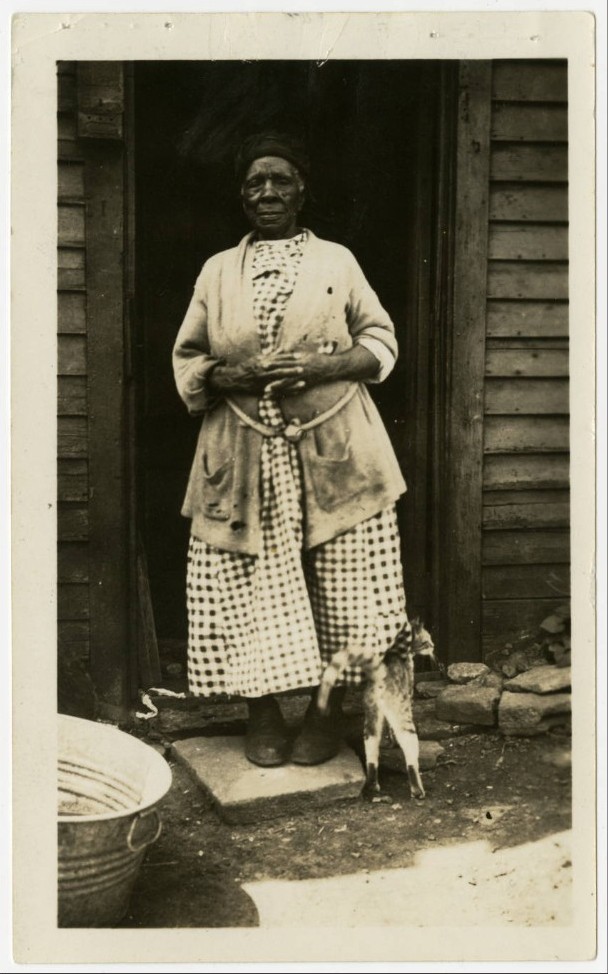
Ewing’s collection documents West Virginia and Ohio rural scenes and the everyday lives of the common people on their farms or in their gardens or school yards. Other than the subjects’ names most additional information about the photographs remains in obscurity. The viewer is left to conjure a story surrounding the photographs on their own.
Another collection in Ohio Memory that I found to have profound historical significance is the collection of photographs of African American former slaves in Ohio (circa 1937 &. 1938). The photographs are of elderly African Americans and pain and hardship are evident in each face. A photograph that I especially like is of Angeline Lester.
Ms. Lester stands with her folded hands over her burlap jacket, which is tied at her waist with what appears to be a rope. A domesticated cat is rubbing around her legs and the woman’s wash tub appears in the photo close by. Her weathered face and hands are evidence of a hard life that has been filled with long hours of labor. The cat gives the photo a softness compared to the woman’s worn appearance. Photos such as these show the humanity of the subject and stir empathy from me, the viewer. Fortunately, these photographs were not lost but were found in Ohio’s State Archives, which make them more meaningful to the Ohio population.”
Thank you to Shannon Kupfer-Trausch, Digital Initiatives Librarian at theState Library of Ohio, and her colleagues at the State Library for this week’s post!
Ohio Memory is celebrating 20 years! Visit our blog all year long to learn more about our program, partners and collections.



Leave a Reply
You must be logged in to post a comment.